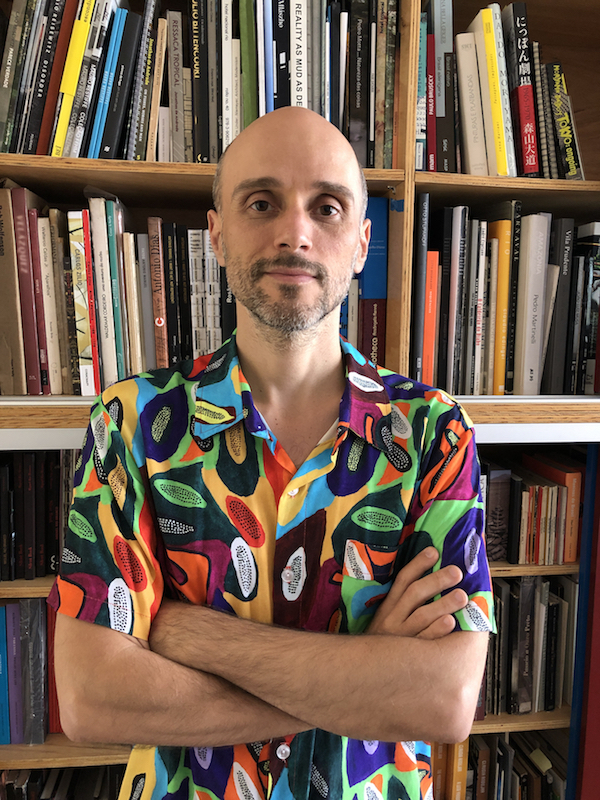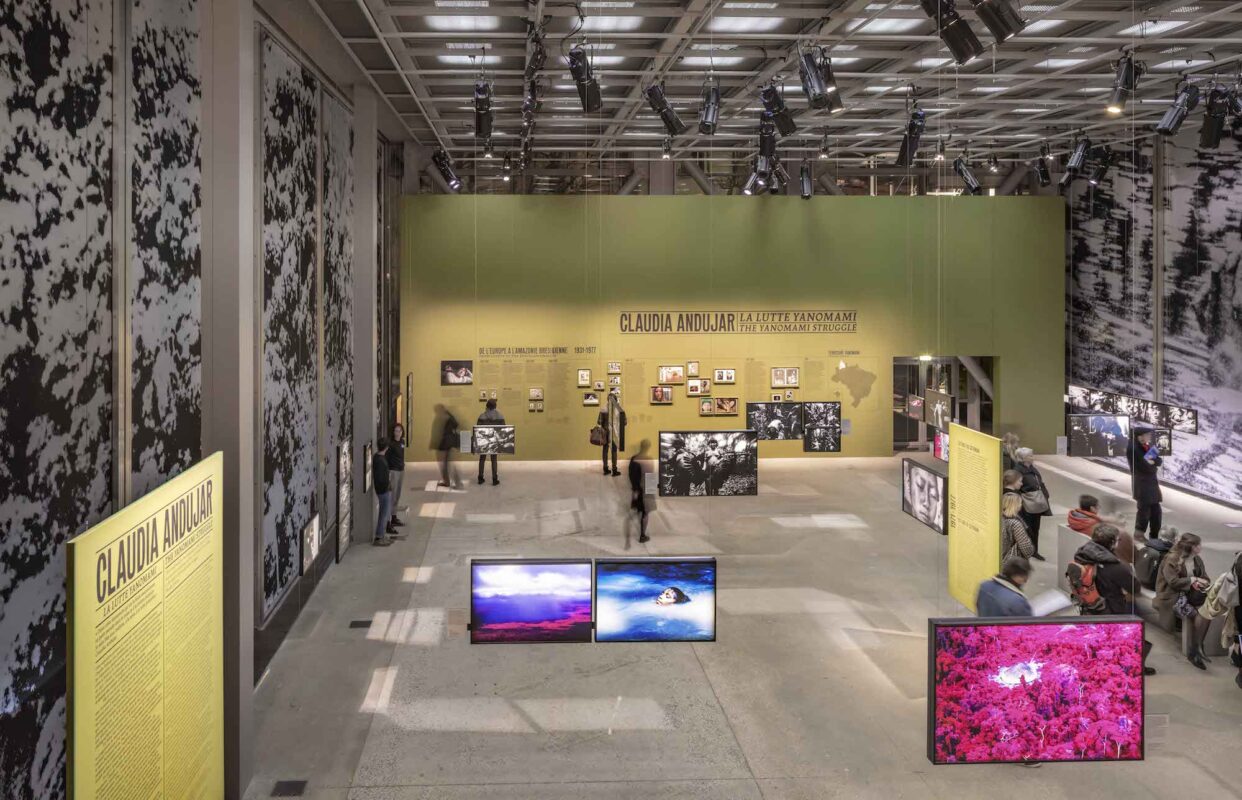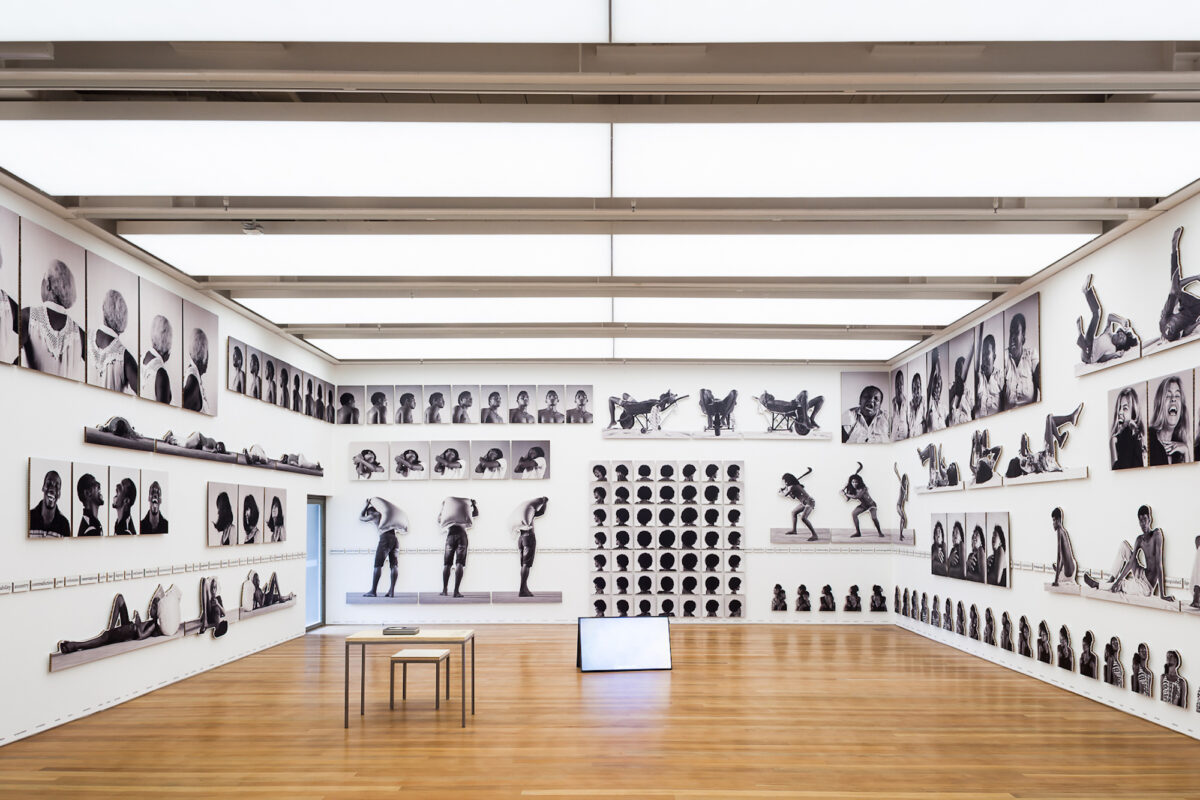Curator Conversations #12
Thyago Nogueira
Thyago Nogueira is the Head of the Contemporary Photography Department at Instituto Moreira Salles, Brazil and editor of ZUM photography magazine. He has curated exhibitions such as Claudia Andujar: The Yanomami Struggle (currently at Fondation Cartier pour L’Art Contemporain, Paris); William Eggleston: The American Color (IMS, 2015); and Body Against Body: the dispute of images, from photography to live transmission (IMS, 2017), among others. He has also guest edited Aperture issue dedicated to São Paulo photography (2014), chaired the 2020 Hasselblad Award, and curated the Offside project with Magnum during Brazil’s World Cup (2014).
What is it that attracts you to the exhibition form?
The fact that it is a spatialised way of thinking, of presenting ideas through the articulation of objects, architecture and their relation to our vision and body. I am also stimulated by the fact that it is a collective endeavour and shared experience, like cinema or a music concert. It is a chance to put objects to the public and see if they reverberate. I see exhibitions as breathing hearts, as an injection of flesh and blood into art museums in order to avoid the risk of them becoming mausoleums of good taste.
What does it mean to be a curator in an age of image and information excess?
It is like being a biologist in the Amazonian rainforest, constantly excited by the diversity of things. You have to work hard. I don’t feel there is an excess of images, as I don’t feel there is an excess of words, sounds or languages. The more the better. It is always a matter of stopping, slowing down, looking and thinking carefully about what you are seeing. And inviting people to do the same. As Luigi Ghirri said about the famous photo of the Earth seen from the space, taken in 1969: “One single image may contain all others, the entire world.”
What is the most invaluable skill required for a curator?
A serious voyeuristic drive, a true interest for the all types of images, regardless of their sources.
What was your route into curating?
It was very winding. It probably started unconsciously during childhood with my parent’s obsession to photograph our routine night and day, and organise volumes of family photo albums. As for the conscious part, I remember deciding to study cinema or photography right after graduating from Law School. So I went back to study art, which I did for 2 years while working as an editorial photographer. But art school had a monotonous interest in photography, and the editorial work as photographer was depressing. I then found an escape in reading and books, so I jumped from art school to literature school, and applied for a job as a proof-reader in a big publishing house. I read, and read, and read, and became a full time editor of literature and non-fiction, with a special interest in art and photography. Years later, I was able to unite the interest for books, editing, and photography when I was invited to create the editorial project of ZUM photography magazine at Instituto Moreira Salles. And then to expand that experience into curating when given the task to build an entire department of Contemporary Photography at the same institution, where I work now. I must say I am still driving that route.
What is the most memorable exhibition that you’ve visited?
Even a bad exhibition can give you a memorable idea. But the 24th São Paulo Bienal in 1998, when I was 22 years old, was mind blowing. Based on the concept of cannibalism and anthropophagy, it brought together hundreds of artists, from Albert Eckout to Cildo Meireles, also including Van Gogh, Francis Bacon, Lygia Clark, Jeff Wall, Louise Bourgeois, Helio Oiticica, Sigmar Polke, and many others. I visited it a dozen times, notebook in hand, trying to absorb what I could. It gave me that expansive feeling of learning a new language, and I am always trying to revive that. But I also like to think of the world we live in as a memorable, ever-changing and ongoing exhibition. Every single day, I am astonished by the images that come my way, from the moment I open the newspaper in the morning to the encounters I have on the streets, from the scenes on my phone or computer to the images I encounter when travelling, spending time in nature or just dreaming. I am constantly trying to connect them, trying to make sense.
What constitutes curatorial responsibility in the context within which you work?
It means supporting the artists so they can take risks, studying and sharing new ideas about their work with as many people as possible, and also preserving these works for future generations. I also feel a responsibility to look at the politics of what I do: how do I increase diversity? How do I adapt to the artists and not the opposite? How do I avoid an authoritarian view? The history of art is not always the history of creativity but also a history of economic power and erasure, so working from Brazil in a globalised field imposes extra responsibilities. How do I do justice to Brazilian artists? How do I challenge the entrenched and excluding Euro-American narrative? On the top of all that, right now Brazil is under a right-wing government that rejects culture, so I have to ask myself: how can we use institutions to safeguard people’s diversity, experimentation and freedom of expression? How can we use our collection to learn about the errors of our past and prevent them from happening again? I have more questions than answers, but asking is also part of my responsibilities.
What is the one myth that you would like to dispel around being a curator?
We don’t dispel myths, we study, dissect, interpret them.
What advice would you give to aspiring curators?
Try to work for art, not for the system of art.♦
Further interviews in the Curator Conversations series can be read here.
Click here to order your copy of the book
—
Curator Conversations is part of a collaborative set of activities on photography curation and scholarship initiated by Tim Clark (1000 Words and The Institute of Photography, Falmouth University), Christopher Stewart (London College of Communication, University of the Arts London) and Esther Teichmann (Royal College of Art) that has included the symposium, Encounters: Photography and Curation, in 2018 and a ten week course, Photography and Curation, hosted by The Photographers’ Gallery, London in 2018-19.
Images:
1-Thyago Nogueira
2-Installation view of Claudia Andujar: The Yanomami Struggle at Fondation Cartier pour L’Art Contemporain, Paris, 2020. © Luc Boegly



